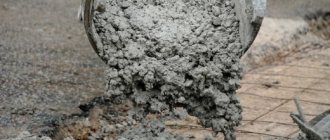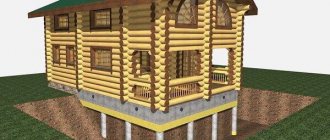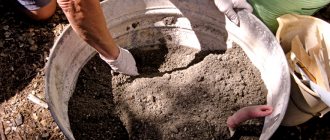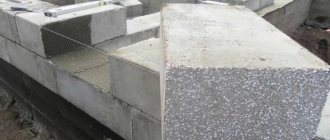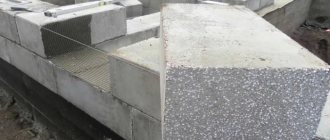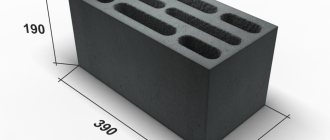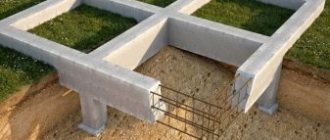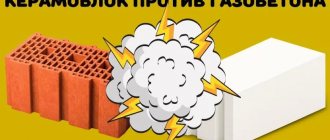Price with VAT, delivery and pallets in Moscow and within a radius of 40 km from the Moscow Ring Road
- Polystyrene concrete lintels PPB-300-IV
Price for one:1227 rub.
Pickup
Order
- Polystyrene concrete lintels PPB-300-III
Price for one:1256 rub. Pickup
Order
- Polystyrene concrete lintels PPB-300-II
Price for one:977 rub. Pickup
Order
- Polystyrene concrete lintels PPB-300-I
Price for one:1577 rub. Pickup
Order
- Polystyrene concrete lintels PPB-270-IV
Price for one:1115 rub. Pickup
Order
- Polystyrene concrete lintels PPB-270-III
Price for one:1142 rub. Pickup
Order
- Polystyrene concrete lintels PPB-270-II Price per piece:
888 rub.Pickup
Order
- Polystyrene concrete lintels PPB-270-I
Price for one:1434 rub. Pickup
Order
- Polystyrene concrete lintels PPB-240-IV
Price for one:991 rub. Pickup
Order
- Polystyrene concrete lintels PPB-240-III
Price for one:1015 rub. Pickup
Order
- Polystyrene concrete lintels PPB-240-II
Price for one:790 rub. Pickup
Order
- Polystyrene concrete lintels PPB-240-I
Price for one:1274 rub. Pickup
Order
- Polystyrene concrete lintels PPB-210-IV
Price for one:867 rub. Pickup
Order
- Polystyrene concrete lintels PPB-210-III
Price for one:888 rub. Pickup
Order
- Polystyrene concrete lintels PPB-210-II
Price for one:691 rub. Pickup
Order
- Polystyrene concrete lintels PPB-210-I
Price for one:1115 rub. Pickup
Order
- Polystyrene concrete lintels PPB-180-IV
Price for one:743 rub. Pickup
Order
- Polystyrene concrete lintels PPB-180-III
Price for one:761 rub. Pickup
Order
- Polystyrene concrete lintels PPB-180-II
Price for one:592 rub. Pickup
Order
- Polystyrene concrete lintels PPB-180-I
Price for one:956 rub. Pickup
Order
- Polystyrene concrete lintels PPB-150-IV
Price for one:620 rub. Pickup
Order
- Polystyrene concrete lintels PPB-150-III
Price for one:635 rub. Pickup
Order
- Polystyrene concrete lintels PPB-150-II
Price for one:494 rub. Pickup
Order
- Polystyrene concrete lintels PPB-150-I
Price for one:797 rub. Pickup
Order
- Polystyrene concrete lintels PPB-120-IV
Price for one:496 rub. Pickup
Order
- Polystyrene concrete lintels PPB-120-III
Price for one:508 rub. Pickup
Order
- Polystyrene concrete lintels PPB-120-II
Price for one:395 rub. Pickup
Order
- Polystyrene concrete lintels PPB-120-I
Price for one:637 rub. Pickup
Order
What is polystyrene concrete
The composite was developed as a thermal insulator that can replace mineral wool or polystyrene foam. The composition, in addition to cement and quartz sand, contains polystyrene granules, which provide low thermal conductivity.
The presence of air-entraining additives imparts porosity to the structure, eliminating the separation of components. Polystyrene concrete is used to create partitions, erect walls, and screed.
Polystyrene concrete blocks are a serious alternative to existing analogues, providing them with successful competition:
- high strength;
- heat preservation;
- ease of processing.
The structure of composite polystyrene concrete differs depending on its purpose:
- dense – characterized by a small number of pores and fine filler;
- medium-porous – has average granule parameters and evenly distributed air cavities;
- coarse - has a maximum cell size with coarse filler.
Density changes affect application and performance.
Polystyrene concrete technology
With the advent of polystyrene concrete, the builder received a material that combines the comfort and warmth of natural wood, the strength and fire resistance of brick, the durability of natural stone, the elasticity and ease of processing of plastic, combined with safety for humans and the environment. The composition of polystyrene concrete according to GOST 51263-99 is polystyrene foam granules, cement, additives, and water. This is a new type of building material, the volume of use of which has increased sharply in recent years.
The SIBSTROY company is a conscientious manufacturer offering high-quality and economical, durable and at the same time very easy-to-use polystyrene concrete in the form of polystyrene concrete wall blocks and partitions, reinforced window and door lintels with high load-bearing capacity. This is a material that allows you to quickly and economically build high-quality houses and cottages of any architectural form, which are environmentally friendly and have their own individuality. The production technology complies with all current SNiP.
Polystyrene concrete is a material that combines the comfort and warmth of natural wood, the strength and fire resistance of brick, the durability of natural stone, the elasticity and ease of processing of plastic, while it is environmentally friendly and safe for humans.
Basic properties
Researchers have worked for many years to create such a material with excellent physical and mechanical properties. The resulting “hybrid” has the strength of concrete stone and the low thermal conductivity of expanded polystyrene.
High-quality composite rightfully occupies a leading position among structural and heat-insulating materials. It has the same functional value and density as cellular concrete.
Despite its low density, polystyrene concrete has decent strength characteristics, high sound insulation and low thermal conductivity.
Polystyrene concrete places fewer demands on the raw material base compared to other lightweight concretes. Its properties remain unchanged when using different batches of filler, so it is used as both a thermal insulation and a structural material. In addition, it has no restrictions in finishing options. It is easy to give it the required shape and cut it into the required sizes. It should also be taken into account that a polystyrene concrete wall is 15% warmer than walls made from other concretes.
There are several types of polystyrene concrete building materials, which differ in cross-sectional dimensions and thickness:
- Not load-bearing. It is characterized by the presence of a steel frame and a density of 400 kg/m3. The use of such jumpers is limited by their low load-bearing capacity, which corresponds to low cost.
- Self-supporting. During production, steel reinforcement is used to make a reinforcing frame. The products have proven themselves in individual and mass construction, and are distinguished by decent characteristics.
- Brand D800. Their strength allows them to withstand about 2 tons of weight, and their frost resistance significantly exceeds previous types.
General presentation and characteristics
A popular working material among developers, polystyrene concrete is a type of lightweight concrete that contains cement, polystyrene, clean water and special fibers. The latter minimize microdefects caused by temperature fluctuations and shrinkage of the mixture during hardening. The combination of such components gives it excellent technical characteristics, including good thermal insulation, low weight and high strength.
Builders choose polystyrene concrete directly for lintels, since it can be prepared independently at home without much difficulty or skill.
Walls made of polystyrene concrete are thinner and warmer than internal partitions made of other similar cellular concrete. But in order to get a positive result when using polystyrene cement crossbars, you need to strictly adhere to the production stages and take into account the installation features. Types of jumpers made from polystyrene-based solution:
Products of this type are provided with a reinforced frame that enhances their properties.
- Non-load-bearing. It has low load-bearing capacities and is considered the most budget-friendly on the building materials market.
- Self-supporting. Equipped with a reinforcing welded frame, which provides high strength and the ability to withstand increased loads.
- Brand D800. Such products can withstand up to 2 tons and are resistant to sub-zero temperatures.
Application area
Despite the conflicting opinions about the appropriateness of its use, the composite is popular not only among private developers. Polystyrene concrete lintels are used to strengthen window and door openings.
Taking into account their high frost resistance, as well as their low weight, they are used in combination with various wall materials:
- foam block;
- gas block;
- brick;
- wood concrete
- other.
The scope of application of the products is not limited to private housing construction. When constructing frame multi-story buildings, the outer walls of buildings with plastered facades are laid out from porous block materials. Accordingly, light beams for windows would be appropriate here.
Lintel reinforcement
The lintels from TM Stroydom® are reinforced with fiberglass reinforcement, which significantly reduces the weight of the structures.
A distinctive feature of composite reinforcement is its low thermal conductivity. When using this reinforcement in concrete structures, no cold bridges arise (which cannot be said about reinforcing metal elements), which significantly enhances their thermal insulation performance. Compared to metal reinforcement, fiberglass reinforcement is not exposed to chemically aggressive environments.
This advantage of composite reinforcement is especially important in cases of building structures at temperatures below zero, when the cement is mixed with various salt solutions, which accelerate the hardening process of the lintel. When mixing, primary polystyrene concrete is used, which improves the quality of the lintel.
Rodnikovsky Plant of Modern Construction Materials produces lintels from polystyrene concrete with length (a): 1200; 1500; 1800; 2100; 2400; 2700, with section: 200x300; 200x250; 200x200; 200x160;400x160; 400x200. TM Stroydom® lintels are manufactured with a density of D 400, from which the following technical indicators are derived (compressive strength - B1.0-B2.0; frost resistance grade - not lower than F100; GOST R 51263-2012).
The manufacturer of polystyrene concrete products (blocks, slabs, lintels, etc.) and a commercial mixture of polystyrene concrete is required to have a certificate of conformity for the products produced, as required by GOST. The lintels from the Rodnikovsky Plant of Modern Construction Materials are certified, that is, they have passed a test, confirming their quality.
Advantages
The combination of products with concrete makes it possible to construct buildings that reliably retain heat without the use of additional insulators. Reinforced polystyrene concrete lintels are effective and affordable energy-saving materials. Thanks to innovative technologies, additional insulation is not required when building cottages or multi-storey buildings.
In addition, this composite polystyrene concrete has many other advantages:
- high strength - easily withstands sufficient loads;
- light weight - does not create additional load on the base;
- high plasticity – eliminates deformation and stretching;
- excellent sound insulation;
- ease of installation of beams and transportation.
The clear geometric shapes of the products make it possible to reduce the amount of glue used during installation work and ensure high installation accuracy. In addition, the products are environmentally friendly and do not harm the environment.
Selection of polystyrene concrete lintels
Reinforced polystyrene concrete lintels are widely used in conjunction with any masonry wall material: polystyrene concrete blocks, foam concrete, gas silicate, etc.
The use of these building elements can bring twenty percent savings. The polystyrene concrete lintel has a height of 188 mm and is selected according to the width of the walls being erected. The length of the ceiling is selected taking into account the fact that at the edges of the opening (window, door) it must rest on the masonry by at least 20 cm. It is also necessary to ensure that the lintel is laid correctly. At the end of the block there is an arrow and the inscription “up”.
When using polystyrene concrete floors, the appearance of cold bridges is eliminated and the use of additional insulation is not required.
engages in the sale of polystyrene concrete lintels of its own production.
Flaws
Despite the large number of advantages, it was not possible to do without disadvantages. These include:
- low vapor permeability - if polystyrene concrete was used in the construction of the walls, the room needs additional ventilation;
- high degree of shrinkage - about 1 mm per meter.
However, these shortcomings do not affect the quality of Unicon jumpers.
Attention! The use of beams is allowed at temperatures below -47 degrees.
Disadvantages of polystyrene cement
Additional ventilation is a necessary measure that people resort to to compensate for the inability of the material to “breathe”.
Despite the many advantages of PSBP, they also have weaknesses, which, if not taken into account at the construction stage, will cause problems in operation. Thus, a significant disadvantage is the lack of ability of the walls to “breathe” due to the fact that partition structures made of polystyrene cement do not allow steam to pass through or retain it. Therefore, additional ventilation is always installed in rooms with polystyrene concrete lintels. In addition, such products have increased shrinkage, which also needs to be taken into account when installing jumpers.
Peculiarities
Polystyrene concrete belongs to the same class with foam and aerated concrete lintels, and differs from them by filling it with warm granules.
The main features of the products include:
- high dimensional accuracy - tolerances do not exceed 3 mm, this allows the use of a minimum amount of glue and a seam thickness of about 3-4 mm, which significantly improves thermal insulation;
- their low weight allows the beams to be mounted without the use of lifting equipment;
- service life reaches 100 years;
- a large selection of sizes makes it possible to select products that match the design parameters;
- high resistance to rot, fungi and mold.
Laying lightweight concrete blocks provides a support area of 20 cm on both sides. Regardless of the length and cross-sectional dimensions of the jumper, its weight does not exceed 60 kg. In comparison with other cellular concrete products of similar thickness, one can note the advantageous predominance of PSB lintels:
- thermal resistance – exceeds 3.4 times;
- reinforcement consumption is 7.9 less;
- installation complexity - reduced by 2.6 times;
- the cost is 6 or more times lower.
For the manufacture of PB lintels with a steel frame, raw materials with a density of 250-540 kg/m3 can be used, whereas this is impossible with cellular concrete.

